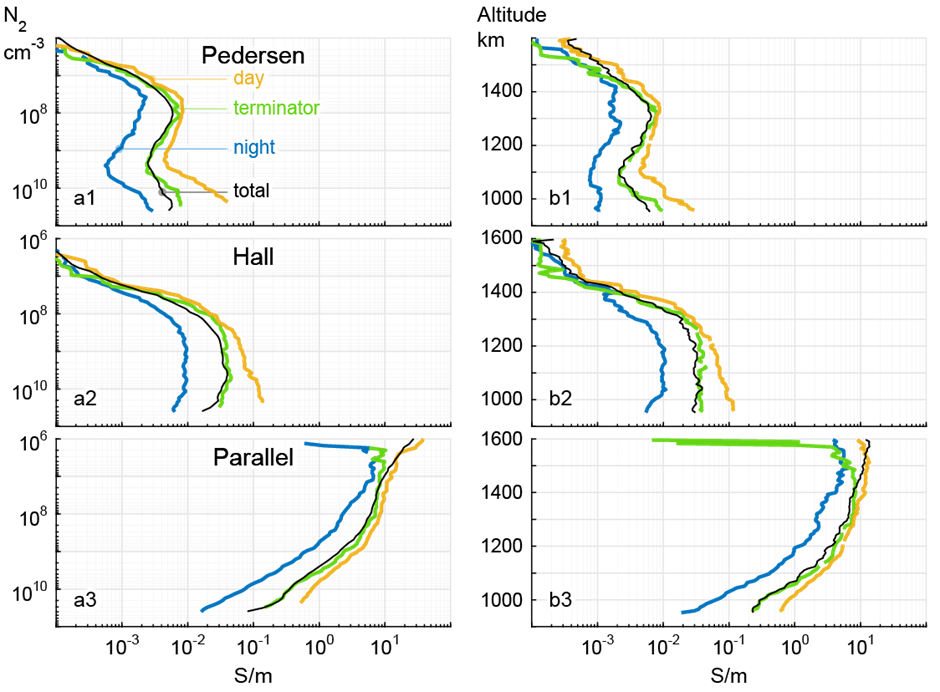Electric conductivities of Titan’s dusty ionosphere
- 1Swedish Institute of Space Physics, Uppsala, Uppsala, Sweden
- 2South-West Research Institute, San Antonio, USA
- 3Imperial College London, London, UK
Titan's ionosphere has a global presence of dusty (ion-ion) plasma a few hundreds of kilometers below the photoionization peak altitudes. Recent studies have shown that charged dust dramatically alters the electric properties of plasmas, in particular planetary ionospheres. Titan is immersed in magnetospheric plasma and magnetic field of Saturn (most of the time) and the moons ionospheric conductivities define the interaction with its environment.
We present revisited electric conductivities and the conductive dynamo region of Titan’s ionosphere using the full plasma content (electrons, ions+, and ions–/dust–) from 13 years of in-situ measurements by the Cassini mission. We show that the traditional approach of only using the easily detectable electron densities underestimates the Pedersen conductivities at ∼1,100–1,200 km altitude by up to 35%. The Hall conductivities are in general not affected but several cases indicate a reverse Hall effect at closest approach (∼900 km altitude) and below. We also identify a dayside-nightside asymmetry, with dayside conductivities a factor ∼7–9 larger than on the nightside (due to higher plasma densities).
Figure 1 shows the median profiles of the Pedersen, Hall and magnetic field parallel conductivities plotted in altitude and versus the neutral atmosphere, color-coded into dayside, terminator and nightside. First thing to note is that due to the extent of Titan’s atmosphere and ionosphere, plotting versus altitude results in noticeable less organized data due to atmospheric variations. These profiles scale with the plasma densities so their trends propagate – we identify solar cycle effects that match those on the heavy charge carriers.

Figure 1. Sliding median conductivity profiles: Pedersen (panels a1, b1), Hall (panels a2, b2) and Parallel (panels a3, b3). The total medians are in solid black. The colored lines are medians for the dayside (SZA<70), terminator (70≤SZA<100) and nightside (SZA≥100). Adapted from Shebanits et al. (2022).
The study is available in open access and includes the dataset: https://doi.org/10.1029/2021JA029910 .
How to cite: Shebanits, O., Wahlund, J.-E., Waite, H., and Dougherty, M.: Electric conductivities of Titan’s dusty ionosphere, Europlanet Science Congress 2022, Granada, Spain, 18–23 Sep 2022, EPSC2022-799, https://doi.org/10.5194/epsc2022-799, 2022.

